Fire on the Royal Tiger! Projectile resistance of the German heavyweight
45mm to 152mm
In previous parts the cycle about the adventures of the "Royal Tiger" in Kubinka dealt with the design features and firepower. It was the turn to deal with the resistance of the German heavy vehicle to the existing artillery pieces at that time. It was decided to shoot "Tiger B" from almost all calibers. In total, Soviet engineers chose 11 domestic and captured guns:
1) Russian anti-tank 45-mm cannon, 1942 model;
2) a domestic anti-tank 57-mm gun ZIS-2;
3) German tank 75-mm cannon KwK-42, model 1942;
4) Russian 76-mm tank gun F-34;
5) the domestic 76-mm gun ZIS-3;
6) American 76-mm cannon (pre-production self-propelled gun Gun Motor Carriage M18 or Hellcat);
7) domestic self-propelled 85 mm gun D-5-S85 (SU-85);
8) German 88 mm PAK-43/1 cannon, model 1943;
9) domestic field 100-mm cannon BS-3;
10) domestic 122-mm gun A-19;
11) self-propelled 152-mm howitzer cannon ML-20.
The test program had a clear separation of the targets of fire. To check the structural strength of the bornehull and turret, the Royal Tiger was hit with 75-mm, 85-mm, 88-mm and 122-mm armor-piercing shells, as well as 85-mm, 88-mm and 122-mm high-explosive fragmentation shells. But to determine the tactical characteristics of the hull and turret, they fired armor-piercing and high-explosive fragmentation shells from calibers 85 mm, 100 mm, 122 mm and 152 mm. For the same purpose, the "Royal Tiger" was beaten by "native" German shells of calibers 75 mm and 88 mm.
Despite the fact that low-power 45 mm cannons were announced in the test program, they never took part in the shelling of the tank. Most likely, the gunners appreciated the security of the Tiger B and decided not to waste the shells. 57mm shells left a few modest marks on the giant's armor, which were not even mentioned in the final reports.
Domestic shells were the priority for testing. It was with them that they hit the tank in the first place, and only then from the German guns. Naturally, first of all they fired from small calibers and then ascending. Before the shelling, Soviet engineers gutted the insides of the German "cat", removed the cannon and the tracks. Before the start, there was a clear order not to tear apart the remains of the "King Tiger" - he had to retain the ability to tow. In addition, domestic metallurgists had to conduct a thorough analysis of the composition of German armored steel, physical, chemical and mechanical properties. It was important to calculate the features of the thermal treatment of the armor steel. As you know, the last parameter is one of the key in the formation of body armor. But it was all beautiful on paper. Reality has shown that even the frontal parts of the tank cannot withstand such an intense shelling and are prematurely destroyed. The reason for this, according to the testers, was the fragility of the armor and insufficient strength. In conclusion, one can find such a paradoxical conclusion: shelling in full program was not possible due to the small surface of the tank's armor plates. If the artillerymen did not have enough projections of the German giant, then the questions should rather be asked to the developers of the test program.
Finally, the most important thing in testing the Tiger B's projectile resistance was a direct comparison with the then-experienced Object 701, which later became the heavy IS-4. However, looking ahead, let us say that in the test report of the "Royal Tiger" there are no comparisons with the Soviet machine. Most likely, the "Object 701" was so superior to the German tank in terms of booking that there was no need for separate documentation.
The "king of beasts" dies
In a brief report from the Armor Institute specialists, it is mentioned that the steel plates of the hull are made of rolled armor, heat-treated to medium and low hardness. In accordance with the classics of tank building, armor 80-190 mm thick had a Brinell hardness of 269-241, and 40-80 mm thick - 321-286. Such a spread is explained by measuring the hardness on the outer and rear surfaces of the armor plate. All armor plates of the tank hull are flat, the connection is carried out using spikes and double-sided welding using mechanical cutting. The tower, with the exception of the sides, is also welded from flat sheets using spikes, outer gougeons and mechanical cutting before welding. In terms of chemical composition, the armor refers to chromium-nickel steel and consists of: C - 0,34-0,38%, Mn - 0,58-0,70%, Si - 0,17-0,36%, Cr - 2,05 –2,24%, Ni - 1,17–1,30%, Mo - absent, V - 0,10–0,16%, P - 0,014–0,025% and S - 0,014–0,025%. As you can see, the armor of the "King Tiger" perfectly shows the state of affairs in the German industry at that time. Molybdenum was completely gone from the armor by June 1944, and vanadium remained in trace amounts. Certain problems were also with nickel, which the Germans left until the end of the war only in armor plates with a thickness of 125–160 mm and 165–200 mm. But there were no particular problems with chromium, the Germans generously added it to the armor "Tiger B" - it became the main alloying component of tank steel.
The landfill engineers' report says nothing good about the King's Tiger's armor. Its quality was worse than that of the trophy "Tigers" and "Panthers" of the first years of release. It is not clear why it was necessary to create such a heavy tank at all, if the Germans already had a Ferdinand of a similar protection with exactly the same gun. Unless just for the sake of a rotating tower ...
Despite the preliminary plans, first of all, the Tiger B was hit by a high-explosive fragmentation projectile from a 122-mm A-19 cannon into the upper frontal plate. The distance was 100 meters, but the armor did not break through. Actually, this was not required. Description of the defeat from the report:
The second shot hit the "King Tiger" from the same weapons, but already a blunt-headed armor-piercing projectile with a reduced charge of gunpowder and with a range of 2,7 km. The speed before hitting the armor was slightly more than 640 m / s, the projectile, leaving a dent with a depth of 60 mm, ricocheted. The third time they fired the same projectile from a distance of 500 meters and with a standard charge of gunpowder. Summary:
There was little such damage, the gun was rolled back a hundred meters and another shot was fired at the Tiger B's forehead. Only this time they used a sharp-headed armor-piercing projectile. He unsuccessfully hit the area of the armor weakened by the previous projectile and pierced it through. The test was not counted and the next time they aimed at the mating of the frontal plates. The shell was similar, but the range was increased to 700 meters. The sharp-headed 122mm round did not pierce the King's Tiger's forehead, but shattered the seam and created a 150mm crack. The second target was the lower front plate. Initial data: 122 mm, blunt-headed armor-piercing, distance 2,5 km. Outcome:
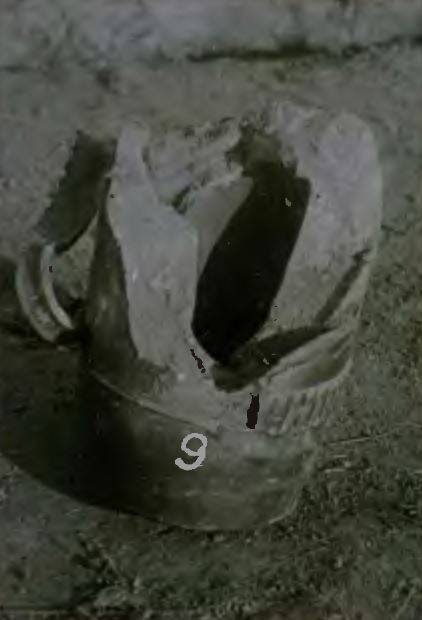
Having prepared the ground for larger calibers, a 152-mm armor-piercing projectile was hit on the frontal plates of the hull. First, point-blank from 100 meters in the upper frontal part. No penetrations were recorded, but a 10 mm high bulge formed on the back side, as well as two cracks 500 and 400 mm long. By tradition, the seam between the upper frontal sheet and the left wheel arch liner has burst. It should be noted that 152-mm armor-piercing was struck on a previously weakened frontal part, in which not all the seams were already intact. Finally, the armor-piercing shell from the ML-20 cannon-howitzer left the most extensive destruction on the lower frontal plate. The artillerymen did not spare the tank and struck from 100 meters. Outcome:
The remains of the destroyed 152-mm armor-piercing shell lay in front of the nose of the defeated King Tiger. It was the turn of a high-explosive fragmentation projectile from the same gun. They also beat me at close range from 100 meters. They hit a ball machine gun mount, tore off the mount on the back side and left a 210-mm crack in the armor.
By the time it was the turn of the 100-mm BS-3 cannon, the Tiger-B's forehead was a pitiful sight: the armor was cracked, the seams parted, and the sheets themselves were riddled with dents. Nevertheless, they worked on the German vehicle with 100-mm armor-piercing shells with different charges of gunpowder and from different distances. The cannon successfully penetrated armor from close ranges (or caused large spalling from the rear side). By the 19th shot at the tank, the 100-mm projectile hit the hole from the previous shell, and with the 20th shot in the lower frontal part, the gunners left a hole 1300 mm long. The tank's condition was rapidly deteriorating, it seemed that further shelling no longer made sense. But the "Tiger B" was hit by the "native" 88-mm PAK-43/1. The report on this matter says:
The same gun from a distance of 400 meters with an armor-piercing projectile pierced through the turret of the tank!
The 75-mm sub-caliber projectile of the KwK-42 cannon was already trying to find a living place in the riddled armor of the frontal part of the "Royal Tiger" hull. And I found: from 100 meters I fell under the ball mount, left only a dent and intensified the propagation of cracks along the armor. The penetrating effect of the 85-mm projectile of the D-5-S84 cannon in the SU-85 self-propelled gun was also investigated. In vain: the upper frontal plate was not pierced from 300 meters. The same result was with the S-53 gun.
The testers on the 32nd shot returned to the 122-mm cannon, but they were hitting the turret. After several unrecognized hits, a shell from 2500 meters broke both the forehead of the tower and its roof, leaving numerous cracks throughout the structure. But from 3,4 km, the blunt-headed ammunition could not pierce the forehead of the tower - it left only a 90-mm dent and cracks. Maybe due to the reduced charge of gunpowder in the case.
The recommendation for the effective destruction of the "King Tiger" head-on was the following:
That is, to put it simply, it is better not to enter the front of a heavy German tank at all. Only from the flanks or even from the stern.
The Soviet test artillerymen hit the side projection much more successfully than the hull's forehead. 85-mm cannons pierced the vertical side from 1350 meters, and the inclined side from 800 meters. The 76-mm gun of the Hellcat self-propelled gun proved to be very good, which pierced the vertical side from 1,5 kilometers. And from 2000 meters, the "American" pierced the armor of the "Royal Tiger" in the fender liner area. Overseas weapons were clearly superior in efficiency to domestic 85-mm guns. The ZIS-3 cannon of 76,2 mm caliber could not penetrate the side of a heavy tank even from 100 meters. The result of studying the armor resistance of the sides of the hull and turret of the "Royal Tiger" was the conclusion that they are distinguished by a sharp unequal strength in comparison with the frontal parts and are the most vulnerable. You can take this as a guide to action for domestic tankers and anti-tankers.
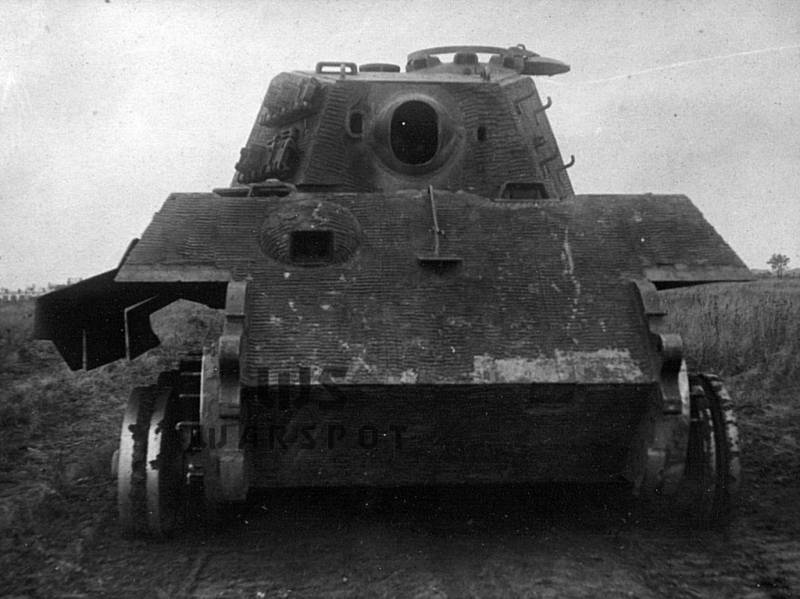
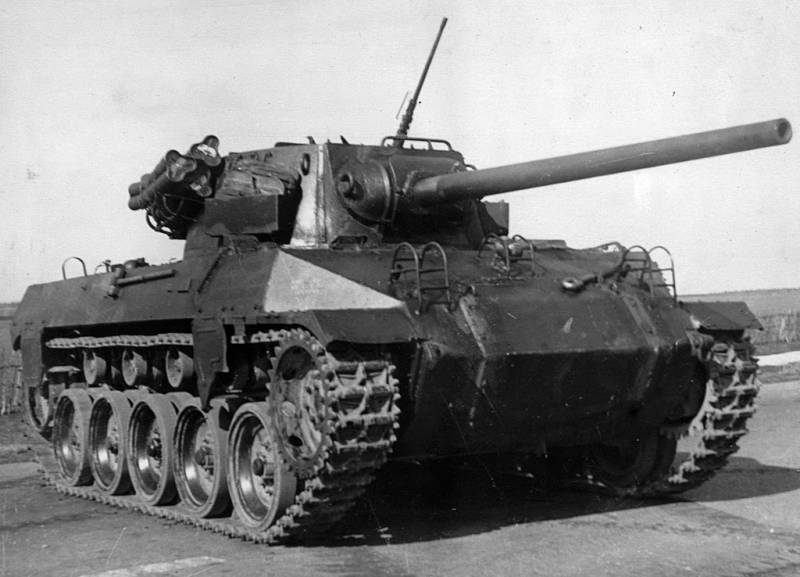
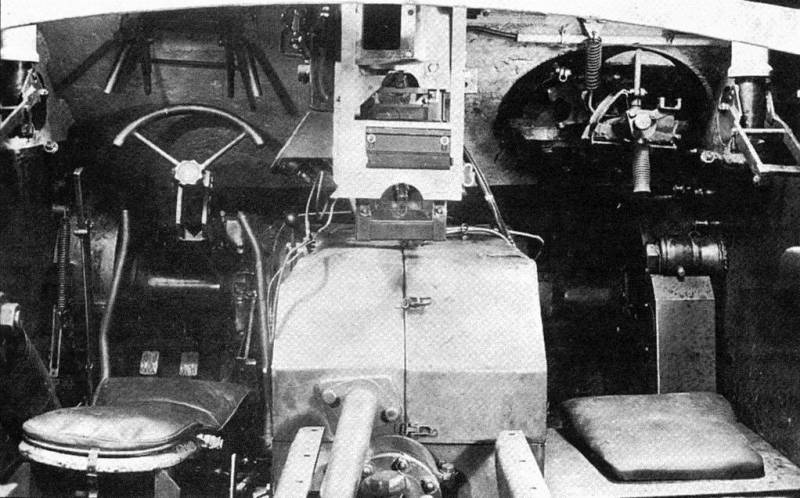
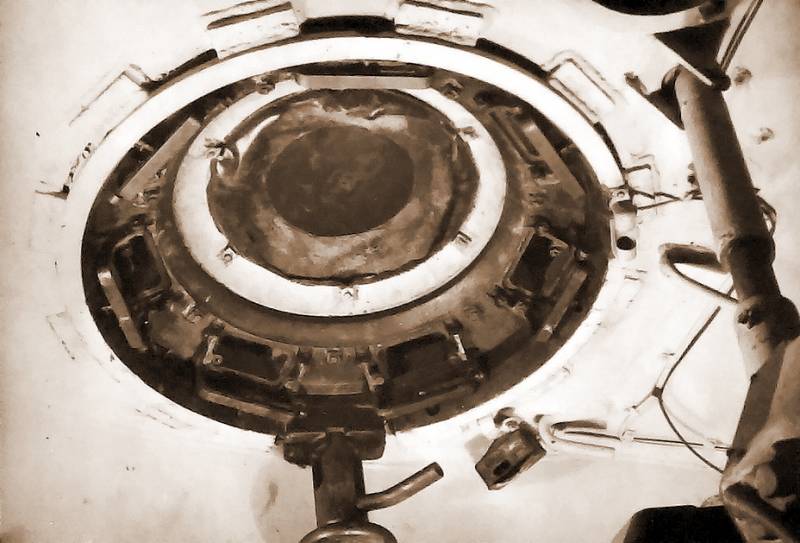
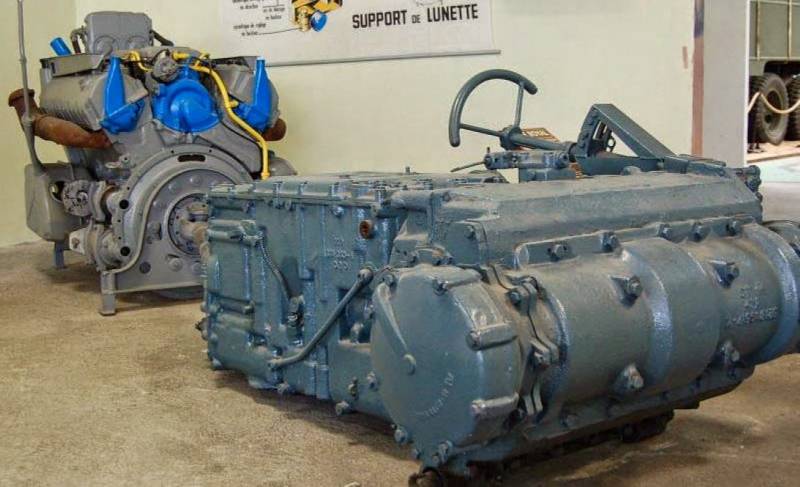
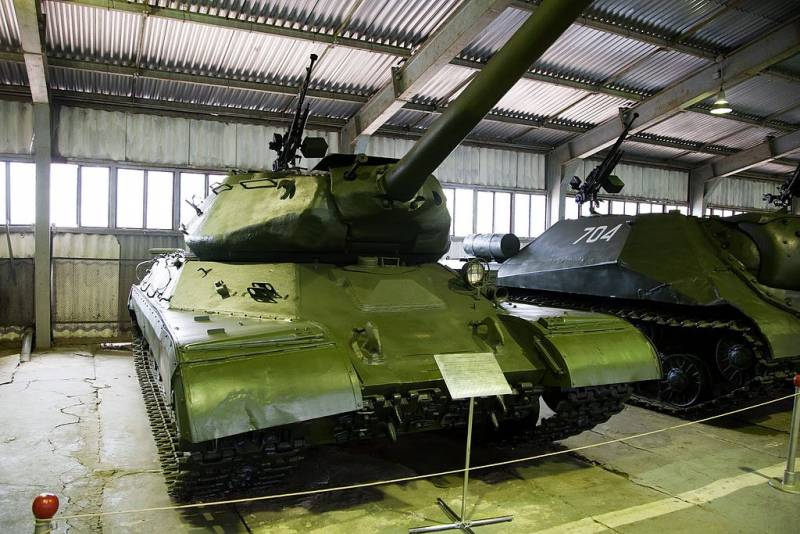
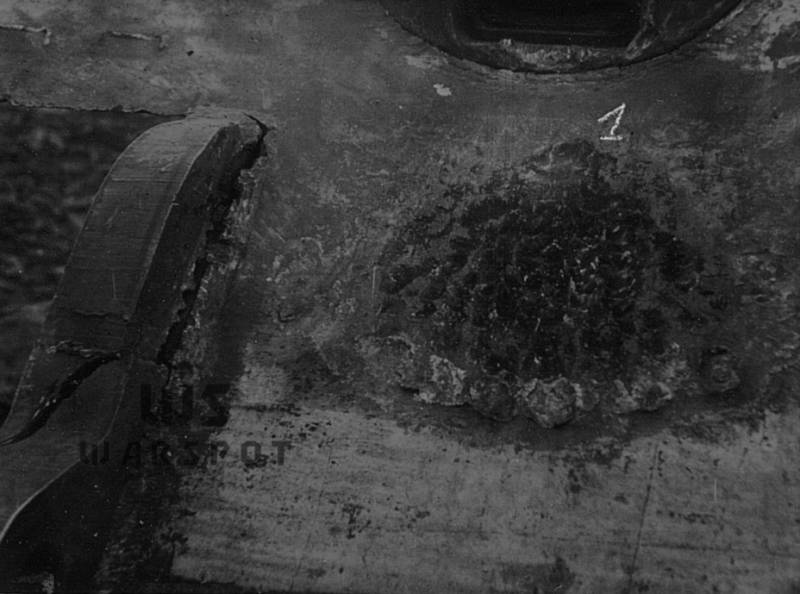
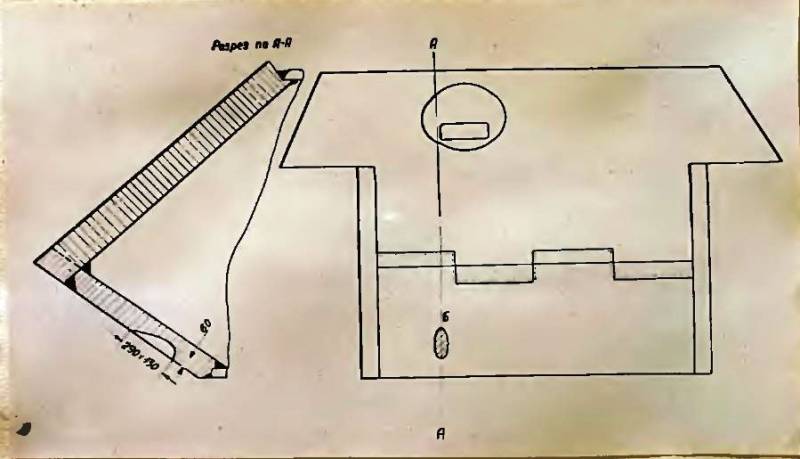
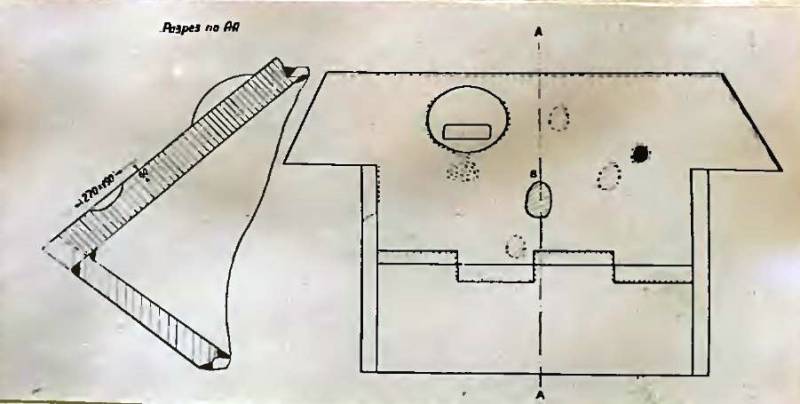
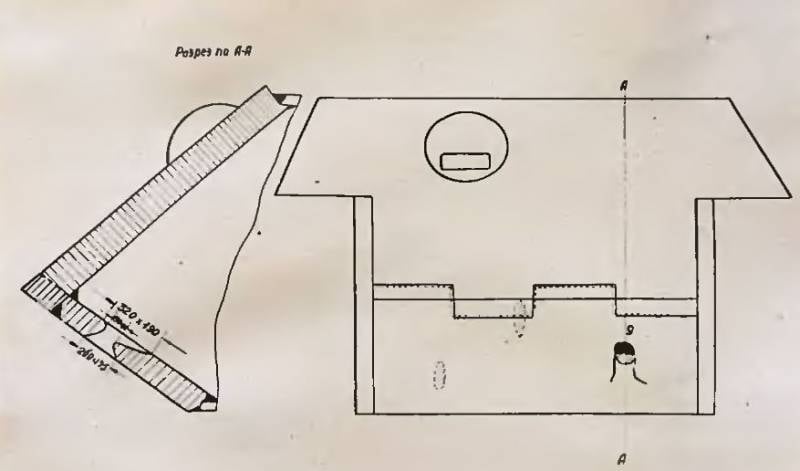
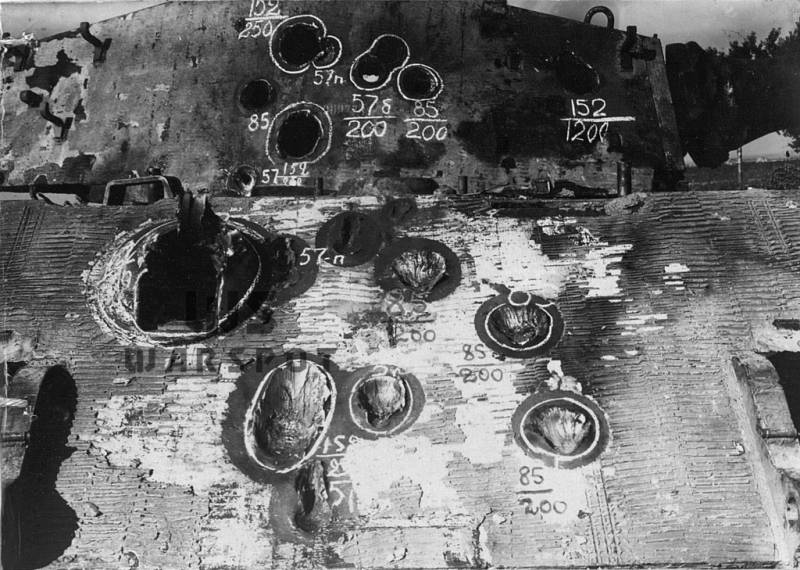
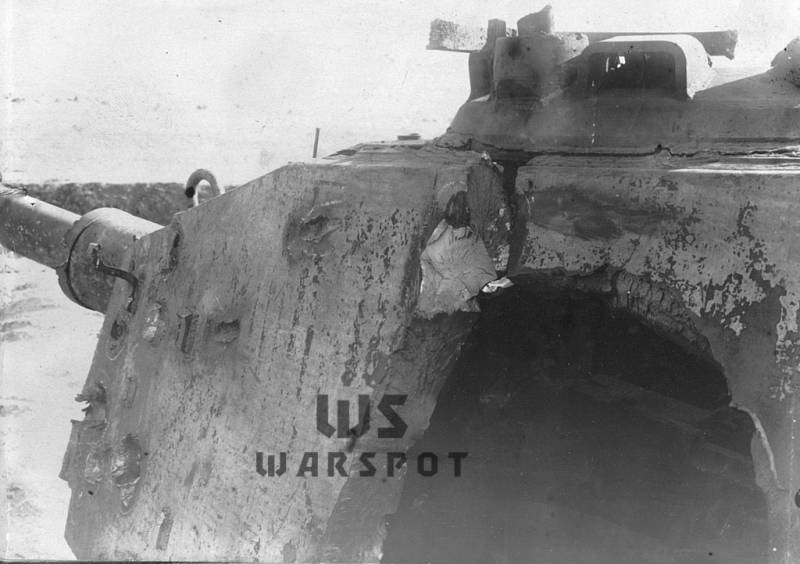
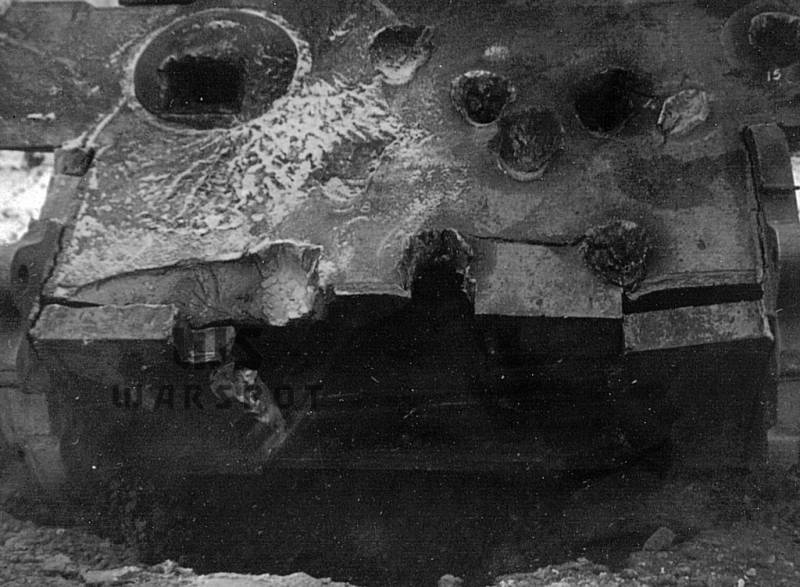
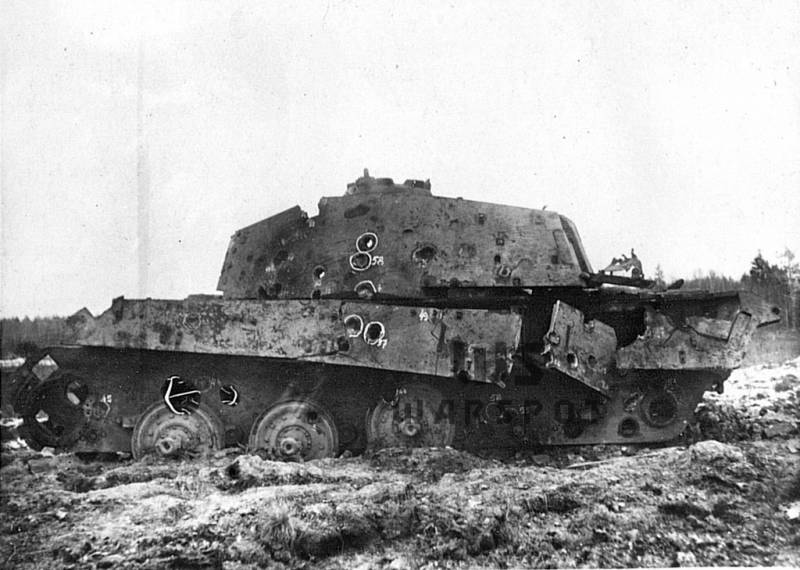
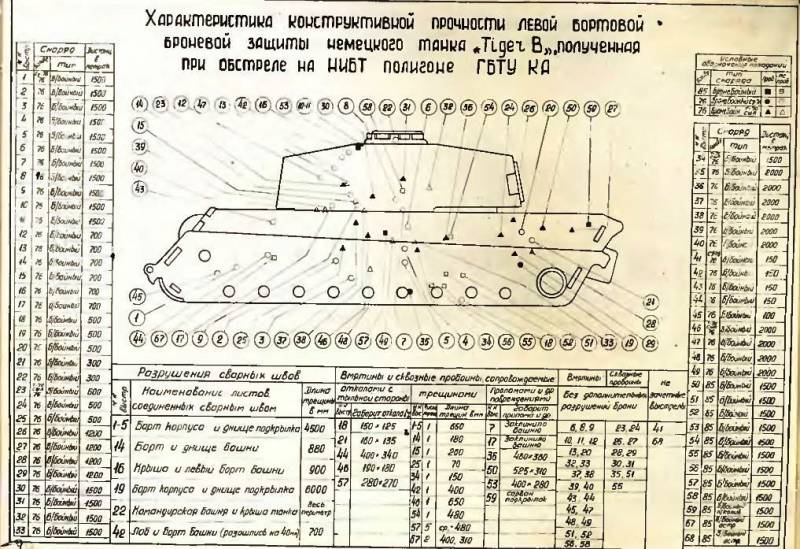
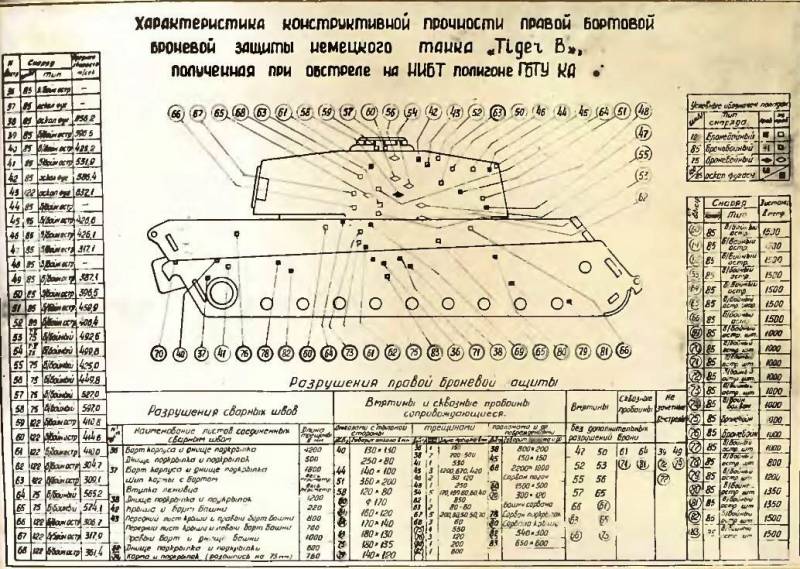
Information